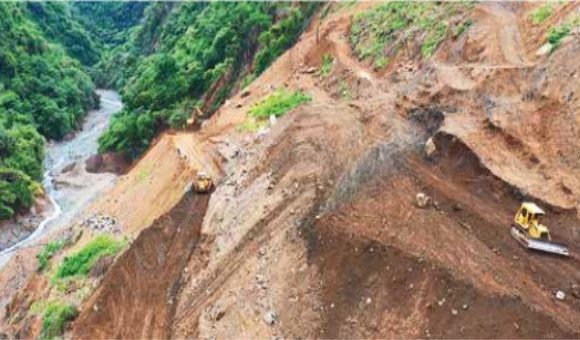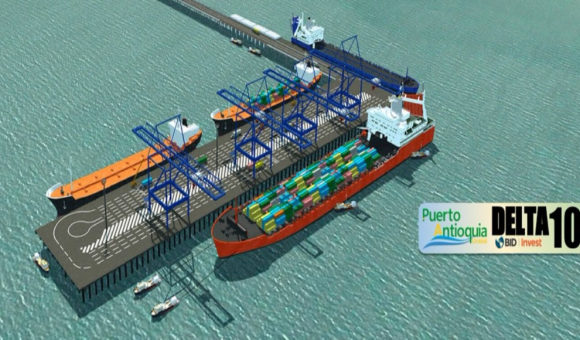Update: EPM Notes that Controller General’s Hidroituango Report Doesn’t Find Corruption, Malfeasance

Medellin-based electric power giant EPM on September 25 issued a bulletin pointing out that nothing in the latest Colombian Controller General’s report about the US$5 billion “Hidroituango” hydroelectric project in Antioquia finds any instances of corruption.
Nor does the Controller’s report point to any criminal or disciplinary actions that would result from the April 2018 collapse of a diversion tunnel that has forced a three-year delay in power sales from Hidroituango, along with many millions of dollars in infrastructure damage.
As for the Controller’s findings that the tunnel collapse is likely to cost EPM roughly US$569 million in lost sales and infrastructure recovery — and possibly as much as COP$2.9 trillion (US$852 million) in loss of net present value – those calculations remain hypothetical, according to EPM.
“For legal reasons in the fiscal responsibility process, EPM explanations can only be delivered to [the Controller General] later; that is, during the fiscal investigation process. The company is convinced that, by that time, it will resolve satisfactorily all the doubts and concerns contained in the report,” according to EPM.
“Regarding the recognition of the costs derived from the contingency, it is necessary to wait until the amount [of insurance coverage] that the insurer will recognize and the corresponding schedule of insurance payments, which, as EPM reported [last week] will result from a rigorous analysis of the quantification of damages according to the conditions established in the policy.
“The company will promptly inform the nation of the results when the disbursed [insurance payment] resources enter EPM and go into the financial statements of the project.
“The [Hidroituango] works have met the technical specifications, construction plans and construction programs using technical rigor and administrative measures that are demanded of a megaproject of this size.
“In fact, at the time of the April 28, 2018 [tunnel collapse] contingency, project execution was on-schedule and within the estimated budget.
“The Hidroituango hydroelectric project remains technically viable and financially. It is indispensable for the energy security of Colombia and, just as important, has a note of insurance coverage issued by insurance company Mapfre [as noted last week] based, among other considerations, on not having evidence of negligence or malintention during construction of the project.
“For EPM, Hidroituango is a crucial infrastructure project for the development of the country. Its entry into commercial operation, which according to the current forecast will be a at the end of 2021, will generate 17% of the country’s energy, with clean, reliable, safe and low-cost technology, and will bring multiple benefits for Colombians.”
What The Report Actually Said
Colombia’s Controller General on September 20 first unveiled a report that questioned management decisions by EPM during construction of the Hidroituango plant. Those decisions ultimately could cost EPM at least US$246 million in infrastructure damages and another US$323 million in lost power sales, accodring to the report.
However, the actual costs of physical damage could rise by another COP$423 billion (US$124 million) if EPM ultimately discovers more damages to machinery and equipment, the report cautions.
“In addition, there are some [cost issues] whose amount is yet to be determined, such as the repair of cavities, the fracturing of rock, the installed steel shields, the civil works in the machine room and additional elements to be written off,” according to the report.
On the other hand, the Controller’s report fails to include trillions of pesos of damage-coverages that EPM now expects to recover following a decision by insurance giant Mapfre (see September 17, 2019 Medellin Herald).
Bottom line: Hidroituango’s actual infrastructure-damage and power-sales losses – covered by insurance – presumably could be excluded from the Controller’s current net-present-value calculations, now estimated at a negative COP$2.9 trillion (US$852 million).
One curious figure in the Controller’s report finds that EPM spent an extra COP$484 billion (US$142 million) to accelerate completion of the dam and the engineered spillway in the wake of a diversion-tunnel collapse last year. That tunnel collapse forced EPM to divert Cauca River water through the machine room in order to avoid a catastrophic dam collapse.
However, since EPM was going to continue building the dam and spillway in any case, it’s unclear how much of that US$142 million would have been spent no matter the impact of the tunnel-collapse contingency.
Another puzzling item in the report states that the Controller partly based its findings upon a heretofore-secret Universidad Nacional study on financial impacts of the tunnel collapse. But EPM has noted publicly thatt it had never seen this study and hence hadn’t been able to respond to its supposed conclusions.
According to the text of the Controller’s report, “one of the decisions taken by EPM that had the greatest impact on the project was the non-construction of the guides for the closing gates of the diversion tunnels.”
In addition, “the construction of the auxiliary diversion gallery [the water diversion tunnel that later collapsed] was contrary to the recommendations of the EPM Advisory Board, which always pointed out the need to conform to the original designs,” according to the Controller’s report.
“On repeated occasions, the EPM Advisory Board expressed its disagreement with the so-called ‘Acceleration Plan’ and the construction of the Auxiliary Deviation Gallery [diversion tunnel], indicating that ‘the technical risks associated with acceleration are not acceptable for a project of this magnitude’ and, in addition, ‘there is still uncertainty that the multiple and delicate tasks remaining to achieve the diversion are executed in a timely manner.’
“The Board of Advisers always recommended adjusting [the project] to the original design [for diverting the Cauca River] in the first half of 2014 and, if necessary, recover [project construction] time by speeding up the construction of the dam, which was an alternative with much less risk than the acceleration of the diversion tunnel,” according to the Controller’s report.
Four years prior to the tunnel collapse, EPM had fallen behind in the original construction schedule, the report noted.
To compensate, EPM decided to invest about COP$1 trillion [US$293 million] in alternative measures aiming to recoup lost time and hence ensure timely capture of future planned electric-power sales. But when the diversion tunnel collapsed, those alternative measures turned into a costly failure, the Controller noted.
As a result, “the consolidated loss of profit from the project is estimated at COP$1.1 trillion [US$323 million]; and a presumed detriment to public equity was established at COP$2.9 trillion [US$852 million], corresponding to what is estimated as the destruction of value due to the greater investments made without entering into [timely] operation,” according to the Controller.
Prior to issuing the report, the Controller’s audit of the Hidroituango project took place between March 4 to July 17, 2019, involving “a multidisciplinary team of auditors composed of lawyers, civil and systems engineers, economists, accountants and geologists, among other professions, and all with more 15 years of association with the Controller,” according to the agency.
“Projects such as Hidroituango must comply with high design and construction standards, given the social, environmental and economic impact they produce, but the Comptroller’s conclusion is that this has not been the case,” according to the report.
“There are weaknesses in the [engineering] technical studies both in initial logistics works, as well as in the main works, which resulted in modifications to the contracts due to larger amounts of works, inclusion of new items, redesigns and changes in construction techniques, which generated more time and costs for the project,” according to the report.
In addition, “EPM’s economic valuation of the project currently contemplates that in subsequent years it will recover, through insurance policies, [physical] damages and lost profits that, if not received, will affect negatively the economic expectations that are had on the project in the medium and long term,” the report concludes.
















